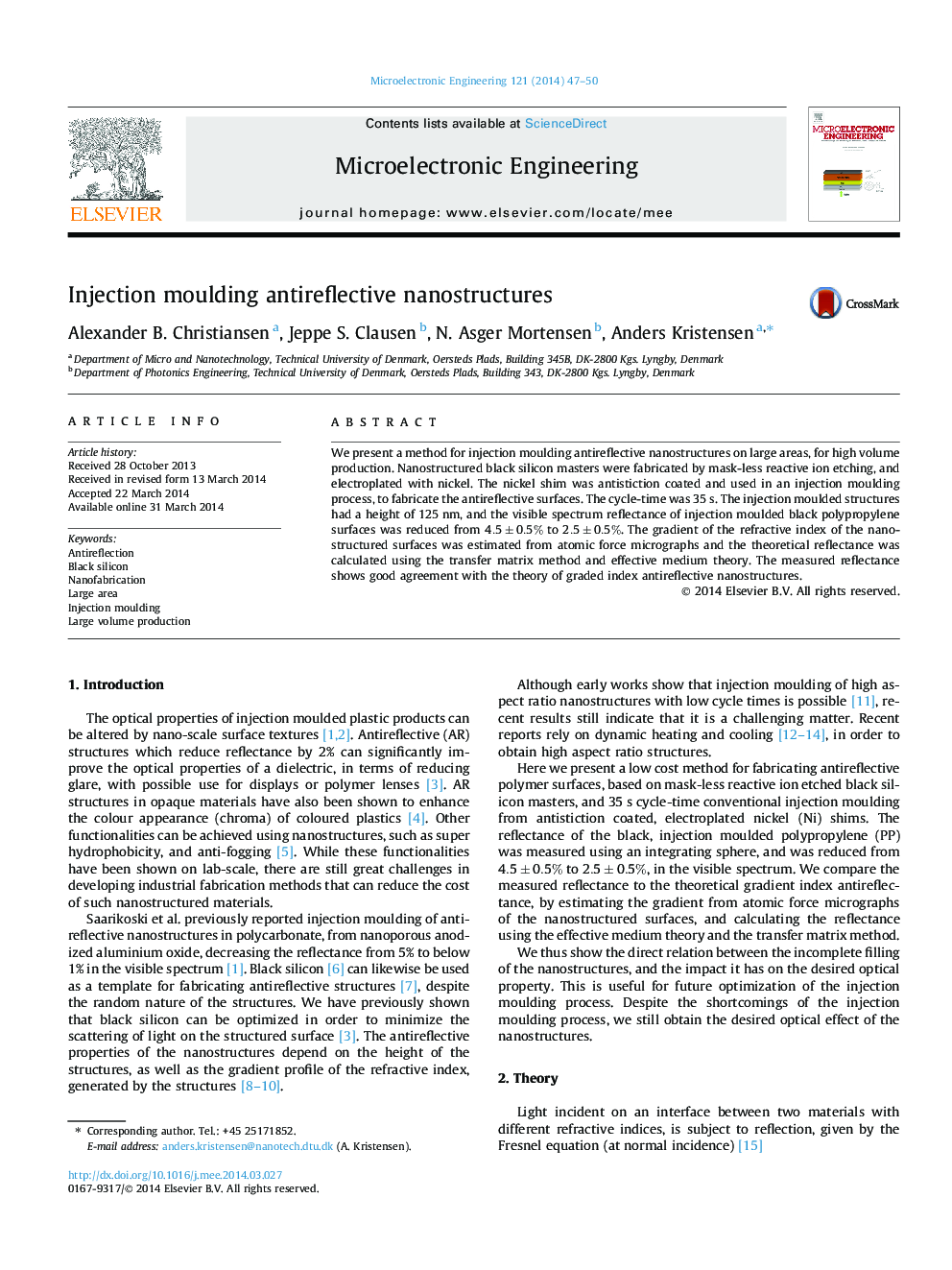| Article ID | Journal | Published Year | Pages | File Type |
|---|---|---|---|---|
| 539546 | Microelectronic Engineering | 2014 | 4 Pages |
•Antireflective nanostructures were injection molded with 35 s cycle times.•Measured reflectance was reduced from 4% to 2%.•We compare the measured reflectance to that calculated from AFM data, using effective medium theory.
We present a method for injection moulding antireflective nanostructures on large areas, for high volume production. Nanostructured black silicon masters were fabricated by mask-less reactive ion etching, and electroplated with nickel. The nickel shim was antistiction coated and used in an injection moulding process, to fabricate the antireflective surfaces. The cycle-time was 35 s. The injection moulded structures had a height of 125 nm, and the visible spectrum reflectance of injection moulded black polypropylene surfaces was reduced from 4.5±0.5%4.5±0.5% to 2.5±0.5%2.5±0.5%. The gradient of the refractive index of the nanostructured surfaces was estimated from atomic force micrographs and the theoretical reflectance was calculated using the transfer matrix method and effective medium theory. The measured reflectance shows good agreement with the theory of graded index antireflective nanostructures.
Graphical abstractFigure optionsDownload full-size imageDownload as PowerPoint slide
